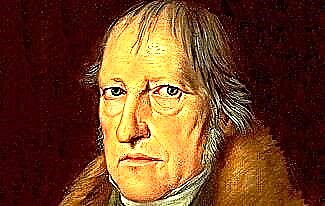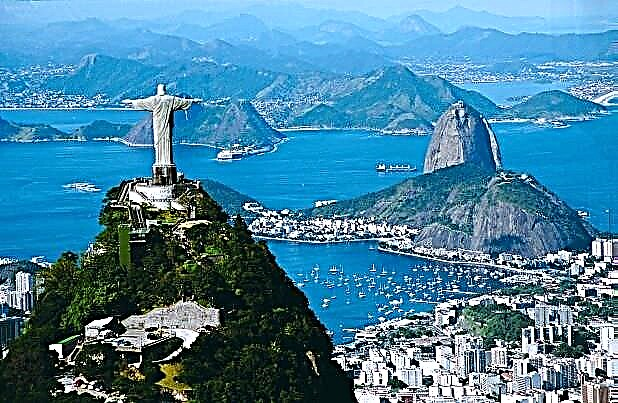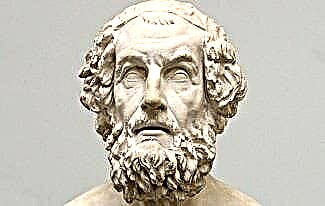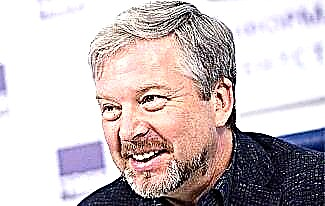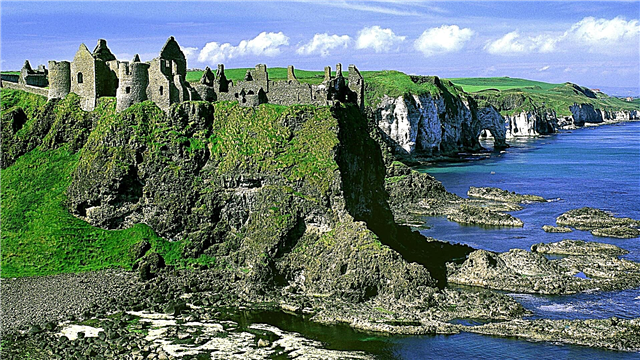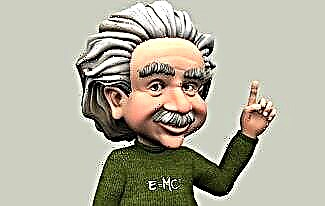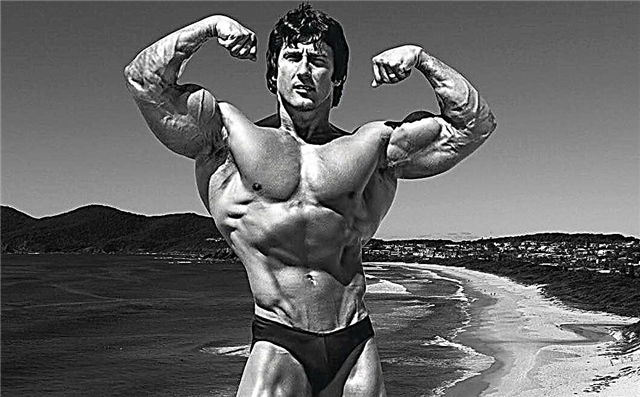
Marat Akhtyamov
Ivan Ivanovich Shishkin (1932 - 1898) is the brightest star in the galaxy of Russian landscape masters. No one showed greater skill in depicting Russian nature. All his work was subordinated to the idea of reflecting the beauty of nature as accurately as possible.

Hundreds of works came out from under Shishkin's brush, pencil and engraving cutter. There are several hundred paintings alone. At the same time, it is very difficult to sort them by time of writing or by skill. Of course, at 60, he painted differently than at 20. But there are no sharp differences in themes, technique of performance or color schemes between Shishkin's paintings.
Such uniformity, coupled with outward simplicity, played a cruel joke with Shishkin's creative legacy. Many people involved in painting, knowledge about painting, or bits of knowledge about painting, consider the painting of I.I.Shishkin to be simple, even primitive. This apparent simplicity was used by marketers, no matter how they were called in Russia during the change of the political regime. As a result, at one time Shishkin could be seen everywhere: on reproductions, rugs, sweets, etc. There was an attitude towards Shishkin as a manufacturer of something infinitely boring and formulaic.

In fact, of course, Ivan Shishkin's work is diverse and multifaceted. You just need to be able to see this variety. But for this you need to know the language of painting, key events from the artist's biography and be able to make intellectual efforts to comprehend them.
1. Ivan Ivanovich Shishkin was born in Elabuga (now Tatarstan). His father Ivan Vasilievich Shishkin was a gifted man, but completely unlucky in business. Having inherited the title of a merchant of the second guild, he traded so unsuccessfully that he first signed up to the third guild, and then completely signed out from the merchants in the middle class. But in Elabuga he had great authority as a scientist. He built a water supply in the city, which was then a rarity in larger cities. Ivan Vasilievich knew about mills and even wrote a manual for their construction. In addition, Shishkin Sr. was fond of history and archeology. He opened an ancient Ananinsky burial ground near Yelabuga, for which he was elected a corresponding member of the Moscow Archaeological Society. For several years Ivan Vasilievich was the mayor.

Ivan Vasilievich Shishkin
2. Drawing was easy for Ivan and took almost all of his free time. After studying for four years at the First Kazan Gymnasium, one of the best in the country, he refused to continue his studies. He did not want to become a merchant or an official. For four long years, the family was fighting for the future of the youngest son, who wanted to study painting (“to become a painter” according to his mother). Only at the age of 20 did his parents agree to let him go to the Moscow School of Painting and Sculpture.

Self-portrait in his youth
3. Despite the general unfavorable reviews about the political and cultural situation in Russia in the middle of the 19th century, the morals of the Moscow School of Painting and Sculpture were completely free This school was an approximate analogue of Soviet pedagogical schools - the best graduates went to study further at the Academy of Arts, the rest could work as teachers drawing. In essence, they demanded one thing from the students - to work more. Young Shishkin just needed it. One of his friends in a letter blamed him gently, saying that Sokolniki had already redrawn everything. Yes, in those years Sokolniki and Sviblovo were dreams, where landscape painters went on sketches.

The building of the Moscow School of Painting and Sculpture
4. At the school, Shishkin created his first etchings. He never abandoned graphics and prints. On the basis of a small workshop of the Artists' Artel in 1871, the Society of Russian Aquafortists was created. Shishkin was one of the first in Russia who began to treat pictorial engraving as a separate genre of painting. The early experiments of engravers more explored the possibility of replicating ready-made works of painting. Shishkin, on the other hand, strove to create original engravings. He published five albums of etchings and became the best engraver in Russia.

Engraving "Clouds over the Grove"
5. From his youth, Ivan Ivanovich turned very painfully to external evaluations of his works. However, no wonder - the family, due to their own constraint, helped him little, so the artist's well-being, from the moment he left for Moscow, almost entirely depended on his success. Much later, in adulthood, he would be sincerely upset when the Academy, having highly appreciated one of his works, awarded him the order, rather than conferring the title of professor. The order was honorable, but did not give anything materially. In tsarist Russia, even military officers bought awards on their own. And the title of professor gave a stable permanent income.
6. Having entered the Academy of Arts, Shishkin spent several summer academic seasons - as the Academy called what would later be called industrial practice - spent on Valaam. The nature of the island, located in the north of Lake Ladoga, fascinated the artist. Every time he left Balaam, he began to think about returning. On Valaam, he learned how to make large pen drawings, which even professionals sometimes mistook for engravings. For the Valaam works, Shishkin was awarded several Academy awards, including the Great Gold Medal with the inscription "Worthy".


One of the sketches from Valaam
7. Ivan Ivanovich loved his homeland not only as a nature for landscapes. With the Big Gold Medal, he simultaneously received the right to a long-term paid creative business trip abroad. Taking into account the artist's income, this could be the first and last chance in life. But Shishkin asked the leadership of the Academy to replace his overseas voyage with a trip along the Kama and Volga to the Caspian Sea. It was not only the authorities who were shocked. Even close friends urged the artist to join in the fruits of European enlightenment in chorus. In the end, Shishkin gave up. By and large, nothing sensible came of the trip. The European masters did not surprise him. The artist tried to paint animals and cityscapes, but willingly or unwillingly, he chose a nature that was at least somewhat similar to his beloved Balaam. The only delight was the delight of European colleagues and a picture painted under the advance payment taken in St. Petersburg, depicting a herd of cows in the forest. Shishkin dubbed Paris “perfect Babylon”, but did not go to Italy: “it’s too sweet”. From abroad, Shishkin fled early, using the last paid months to stay and work in Yelabuga.

The notorious herd of cows
8. The return to St. Petersburg was a triumph for the artist. While he was sitting in Yelabuga, his European works made a splash. On September 12, 1865, he became an academician. His painting "View in the vicinity of Dusseldorf" was asked for a while from the owner Nikolai Bykov to be exhibited at the World Exhibition in Paris. There Shishkin's canvas coexisted with paintings by Aivazovsky and Bogolyubov.

View in the vicinity of Dusseldorf
9. The aforementioned Nikolai Bykov not only partially paid for Shishkin's trip to Europe. In fact, his influence on the members of the Academy became decisive in the question of attributing the artist to the title of academician. As soon as he received the "View in the vicinity of Dusseldorf" by mail, he rushed to show the picture to venerable artists. And Bykov's word had considerable weight in artistic circles. He graduated from the Academy himself, but wrote practically nothing. Known for his self-portrait and a copy of the portrait of Zhukovsky by Karl Bryullov (it was this copy that was played in the lottery to redeem Taras Shevchenko from the serfs). But Bykov had the gift of foresight in relation to young artists. He bought paintings from young Levitsky, Borovikovsky, Kiprensky and, of course, Shishkin, eventually collecting an extensive collection.

Nikolay Bykov
10. In the summer of 1868, Shishkin, who was then taking care of the young artist Fyodor Vasiliev, met his sister Evgenia Alexandrovna. Already in the fall, they played a wedding. The couple loved each other, but the marriage did not bring them happiness. The black streak began in 1872 - Ivan Ivanovich's father died. A year later, a two-year-old son died of typhus (the artist himself was also seriously ill). Fyodor Vasiliev died after him. In March 1874, Shishkin lost his wife, and a year later another little son died.

Evgenia Alexandrovna, the artist's first wife
11. If I. Shishkin had not been an outstanding artist, he could well have become a scientist-botanist. The desire to realistically convey wildlife forced him to meticulously study plants. He did this both during his first trip to Europe and during his retirement (i.e. undertaken at the expense of the Academy) voyage to the Czech Republic. He always had plant guides and a microscope at hand, which was a rarity for landscape painters. But the naturalism of some of the artist's works looks very documentary.
12. The first work of Shishkin, bought by the famous philanthropist Pavel Tretyakov, was the painting “Noon. In the vicinity of Moscow ”. The artist was flattered by the attention of the famous collector, and even helped out 300 rubles for the canvas. Later, Tretyakov bought many of Shishkin's paintings, and their prices were constantly rising. For example, for the painting “Pine Forest. Mast timber in the Vyatka province ”Tretyakov has already paid 1,500 rubles.

Noon. In the vicinity of Moscow
13. Shishkin took an active part in the creation and work of the Association of Traveling Art Exhibitions. In fact, his entire creative life since 1871 was associated with the Itinerants. The same “Pine Forest…” was first seen by the public at the first traveling exhibition. In the company of the Itinerants, Shishkin met Ivan Kramskoy, who highly appreciated the painting of Ivan Ivanovich. The artists became friends and spent a lot of time with their families on field sketches. Kramskoy considered Shishkin an artist of the European level. In one of the letters from Paris, he wrote to Ivan Ivanovich that if any of his paintings were brought to the Salon, the public would sit on their hind legs.

Wanderers. When Shishkin spoke, his bass interrupted everyone
14. At the beginning of 1873, Shishkin became a professor of landscape painting. This title was awarded by the Academy based on the results of a competition to which everyone submitted their work. Shishkin became a professor for the painting "Wilderness". He earned the title of professor, which allowed him to officially recruit students, for a long time. Kramskoy wrote that Shishkin can recruit 5 - 6 people for sketches, and will teach all sensible ones, while at the age of 10 he leaves the Academy alone, and even that one is crippled. Shishkin married one of his students, Olga Pagoda, in 1880. This marriage, unfortunately, was even shorter than the first - Olga Alexandrovna died, barely having time to give birth to a daughter, in 1881. In 1887, the artist published an album of his deceased wife's drawings. Shishkin's official pedagogical activity was just as short. Unable to choose students, he resigned one year after his appointment.
15. The artist kept up with the times. When the process of photographing and taking pictures became more or less accessible to the general public, he purchased a camera and the necessary accessories and began to actively use photography in his work. Recognizing the imperfection of photography at that time, Shishkin appreciated the fact that it made it possible to work in the winter when there was no way to paint landscapes from nature.
16. Unlike most representatives of creative professions, I. Shishkin treated work as a service. He sincerely did not understand people waiting for inspiration to come. Work and inspiration will come. And colleagues, in turn, were surprised at Shishkin's performance. Everybody mentions this in letters and memoirs. Kramskoy, for example, was amazed at the heap of drawings brought by Shishkin from a short trip to Crimea. Even Ivan Ivanovich's friend assumed that landscapes unlike what his friend wrote would take some time to get used to. And Shishkin went out into nature and painted the Crimean mountains. This capacity for work helped him to get rid of alcohol addiction in difficult periods of life (there was such a sin).
17. The famous painting "Morning in a pine forest" was painted by I. Shishkin in collaboration with Konstantin Savitsky. Savitsky showed his colleague a genre sketch with two cubs. Shishkin mentally surrounded the bear figurines with a landscape and invited Savitsky to paint a picture together. We agreed that Savitsky would receive a quarter of the sale price, and Shishkin would receive the rest. In the course of the work, the number of cubs increased to four. Savitsky painted their figures. The painting was painted in 1889 and was a great success. Pavel Tretyakov bought it for 4,000 rubles, 1,000 of which were received by Shishkin's co-author. Later Tretyakov, for some unknown reason, erased Savitsky's signature from the canvas.

Everyone saw this picture
18. In the 1890s, Shishkin maintained close friendship with his colleague Arkhip Kuindzhi. According to Shishkin's niece, who lived in his house, Kuindzhi came to Shishkin's almost daily. Both artists quarreled with some of the Itinerants on the issue of participating in the reform of the Academy of Arts: Shishki and Kuindzhi were for participation, and even worked on a draft of a new charter, and some of the Itinerants were categorically opposed. And Kuindzhi can be considered the co-author of Shishkin's painting "In the Wild North" - Komarova recalls that Arkhip Ivanovich put a small dot on the finished canvas, depicting a distant light.

"In the wild north ..." Kuindzhi's fire is not visible, but it is
19. On November 26, 1891, a large exhibition of works by Ivan Shishkin was opened in the hall of the Academy. For the first time in the history of Russian painting, a personal exhibition demonstrated not only finished works, but also preparatory fragments: sketches, sketches, drawings, etc. The artist decided to show how a painting is born, to illustrate the process of its birth. Despite critical reviews from colleagues, he made such exhibitions traditional.
20. Ivan Ivanovich Shishkin died in his workshop on March 8, 1898. He worked together with his student Grigory Gurkin. Gurkin was sitting in the far corner of the workshop and heard a wheeze. He managed to run up, grab the teacher who was falling on his side and drag him onto the couch. Ivan Ivanovich was on it and died a few minutes later. They buried him at the Smolensk cemetery in St. Petersburg. In 1950, the burial place of I. Shishkin was transferred to the Alexander Nevsky Lavra.

Monument to I. Shishkin


